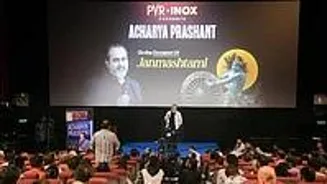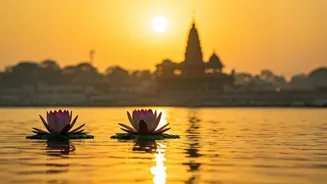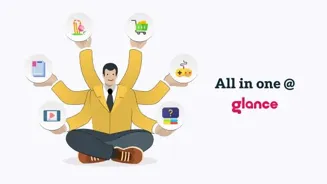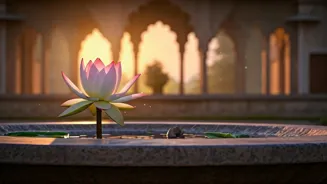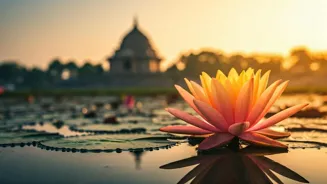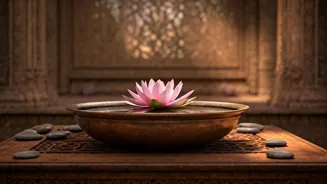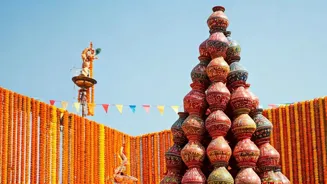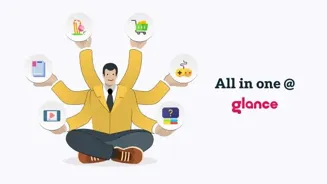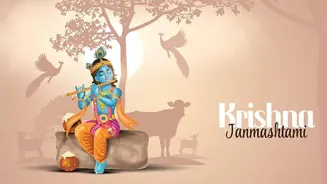On Janmashtami this year, audiences across India filled cinema halls not for a film, but to hear the Bhagavad Gita. In a nationwide broadcast organised by the PrashantAdvait Foundation in collaboration
with PVR INOX, philosopher and author Acharya Prashant spoke on the Bhagavad Gita, from PVR INOX Osia, Goa.
Hundreds joined him in person in Goa, thousands more gathered in multiplexes across major cities countrywide, and tens of thousands of students of his Gita course from across the world streamed the event online. For the Gita students, access to this session was completely free, underscoring the Foundation’s effort to democratise India’s highest wisdom. Altogether, it became one of the largest collective engagements with the Gita in recent years, cutting across states, countries, professions and age groups.
The Verse and Its Meaning
The chosen verse, chapter 6 verse 19, compares the yogi’s steady mind to a flame that does not flicker in a windless place. Acharya Prashant explained that this “Nirvaat Sthaan” (place without wind) does not refer to any physical location or to the body. Nothing in the physical world is beyond the forces of nature; everything can be shaken. The teaching, he said, is directed at the ego: if you are identified with the world, its constant change will drag you in arbitrary directions without your consent.
He gave the example of desires tied to external objects. When the world takes those objects away, suffering begins, and one starts fighting with the world to retain them. This very conflict, he noted, lies at the root of the climate crisis: humanity’s attempt to tame nature for the ego’s demands, ending in destruction.
The Role of Pain in Liberation
Using the analogy of ropes, Acharya Prashant described how each person is tied by countless taut ropes that connect to the world. While we cannot control the other ends of the ropes, we can untie ourselves where they attach to us — at the ego. Once untied, he said, one realises the Self is not merely the body but the entire universe.
He outlined the process of realization as: Love → Sensitivity → Pain → Work → Self-knowledge → More Work. Pain, he said, should not be feared; when knots of ego untie, the ego shivers, but this pain becomes light, revealing the suffering of others.
Questions from the Audience
The discourse was followed by an extensive Q&A. One mother asked how to let her children live freely like other kids while also introducing them to the Gita. Acharya Prashant replied that nothing worthwhile comes without pain. Reading the Gita is not about pleasure, he said; it awakens hidden pains. But if one wants depth and to reach true potential, this process, with its discomfort, must be embraced.
Another question came from a participant recovering from a fracture, who noticed the body still craved pleasurable food. Acharya Prashant explained that happiness is often just a reaction to suffering: a child eats a chili, so the mother offers sugar. The issue is not pleasure itself but expecting something from it that it cannot give. He distinguished between two types of pain: physical (aadhibhautik), spiritual/ego-based (aadhyatmik), and the mistakes of addressing them wrongly, either through materialism or superstition.
A Marathon of Reflections
After the Q&A, participants from around the country and abroad began logging in to share how Acharya Prashant’s teachings had transformed their lives. The session began at 11:30 in the morning, with Acharya Prashant speaking for four hours, and continued through reflections and discussions until 4:30 the next morning: a total of 17 hours. The organisers called it one of the longest collective engagements with the Gita in modern times.
The atmosphere was charged with deep reflections. One after another, students spoke of their struggles with ambition, relationships, and inner confusion, and how the teachings of Gita and Acharya Prashant had helped them find clarity. At times, screens lit up with spontaneous singing of Gita shlokas and Kabir Saheb’s dohe. At others, the reflections turned into moments of shared laughter or tears as participants opened up about their journeys.
Many also spoke of the concrete changes the sessions had brought into their lives. Young people said it had given them the confidence to choose the right careers. Couples shared how their relationships had blossomed with greater understanding and harmony. Mothers described how the wisdom of the text had helped them become more patient and grounded in raising their children. Women described how the teachings had enabled them to break free from the shackles of old bondages and take steps toward self-independence. Overall, there was an atmosphere of deep gratitude towards Acharya Prashant and how his teachings had helped transform everyone’s lives.
The scale, depth, and honesty of these online reflections left the organisers and participants alike in awe. What began as a discourse became a global festival of reflection, a living reminder of how the Gita can transform lives in real and practical ways.
Wisdom Meets Technology
The choice of multiplexes as venues became a story in itself. Spaces usually associated with films and entertainment turned, for a day, into quiet halls of reflection. Viewers who would normally walk in with popcorn sat in stillness, watching the Gita unfold on the big screen. The unusual setting highlighted how cinema infrastructure can be repurposed to take timeless wisdom to a modern audience. What made it more striking was that this happened on a weekend when big-budget films were being released, yet PVR-Inox chose to reserve four hours for a Gita session instead: a reflection of changing times and the widespread popularity of Acharya Prashant’s Gita sessions.
This Janmashtami broadcast also built on earlier successes, including the Yoga Day and Guru Purnima addresses in June and July that were screened in theatres across the country and attended by thousands. It came on the heels of another milestone, too: last year, the PrashantAdvait Foundation organised what has been recognised as the largest Gita exam ever conducted, with tens of thousands of students participating worldwide. Taken together, these events signal a major shift: from the usual Janmashtami of laddoos, rituals, and festivities, to cinema halls filled with audiences reflecting on the Gita.
A Living Janmashtami
By the time the session and the marathon reflections wound down, it was clear the event had moved far beyond a single discourse. It had become a collective exercise in living Janmashtami, not just through rituals, but through dialogue and self-examination. Coming right after Independence Day, the gathering was also read as a reminder that outer freedom and inner liberation are not separate, but must go hand in hand if society is to remain strong.
Looking ahead, the Foundation has indicated that more such cinema-based events may be planned, making the Gita accessible in formats that resonate with today’s youth. Acharya Prashant, already a bestselling author with a following of over ninety million across digital platforms, has addressed audiences at premier institutions like IITs, IIMs and global universities in both online and offline formats. His sessions at multiplexes are being seen as part of a wider innovation, bringing deep scriptural wisdom into everyday spaces and making them part of contemporary public life.
